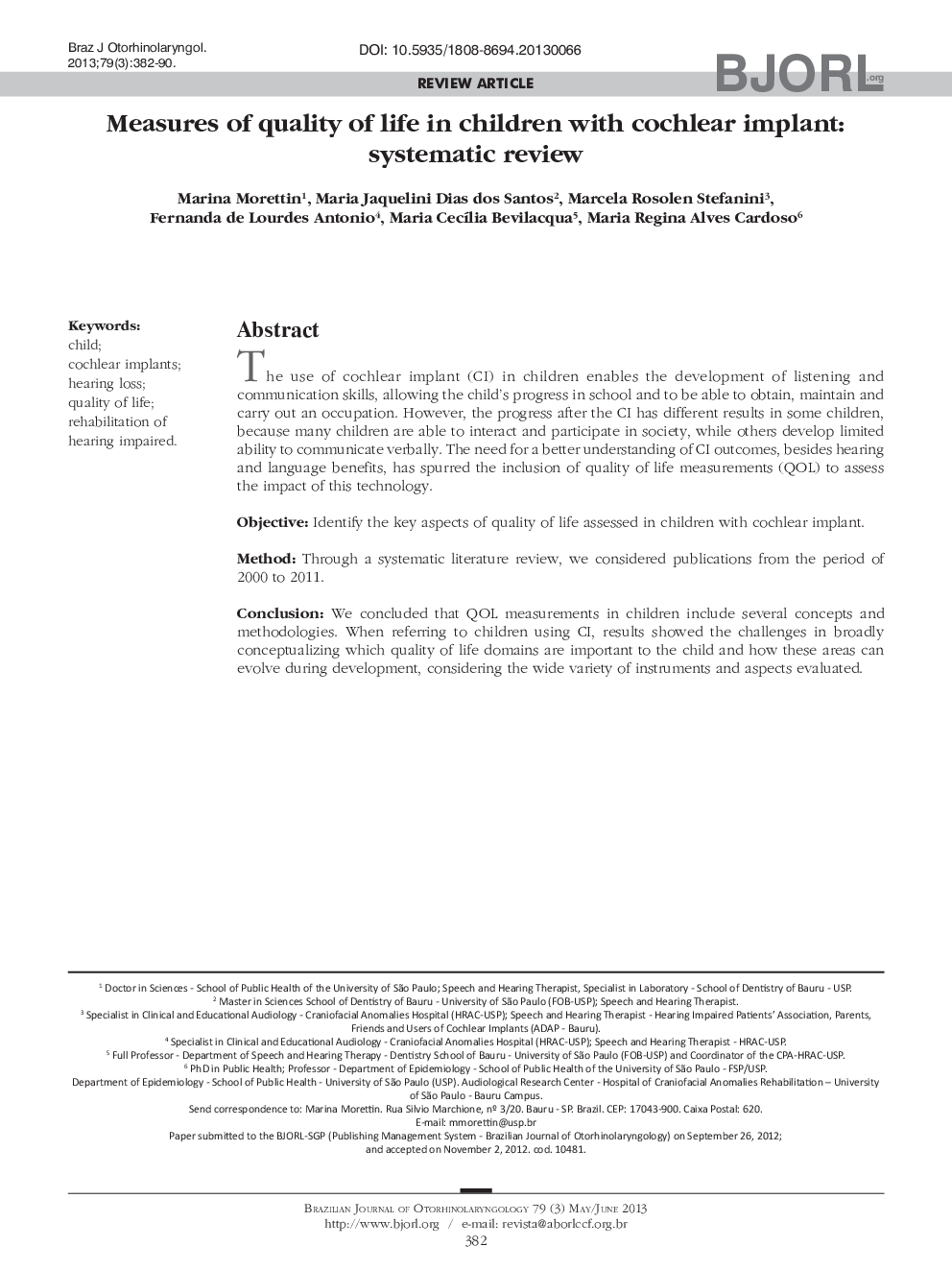| Article ID | Journal | Published Year | Pages | File Type |
|---|---|---|---|---|
| 4106855 | Brazilian Journal of Otorhinolaryngology | 2013 | 9 Pages |
The use of cochlear implant (CI) in children enables the development of listening and communication skills, allowing the child's progress in school and to be able to obtain, maintain and carry out an occupation. However, the progress after the CI has different results in some children, because many children are able to interact and participate in society, while others develop limited ability to communicate verbally. The need for a better understanding of CI outcomes, besides hearing and language benefits, has spurred the inclusion of quality of life measurements (QOL) to assess the impact of this technology.ObjectiveIdentify the key aspects of quality of life assessed in children with cochlear implant.MethodThrough a systematic literature review, we considered publications from the period of 2000 to 2011.ConclusionWe concluded that QOL measurements in children include several concepts and methodologies. When referring to children using CI, results showed the challenges in broadly conceptualizing which quality of life domains are important to the child and how these areas can evolve during development, considering the wide variety of instruments and aspects evaluated.
